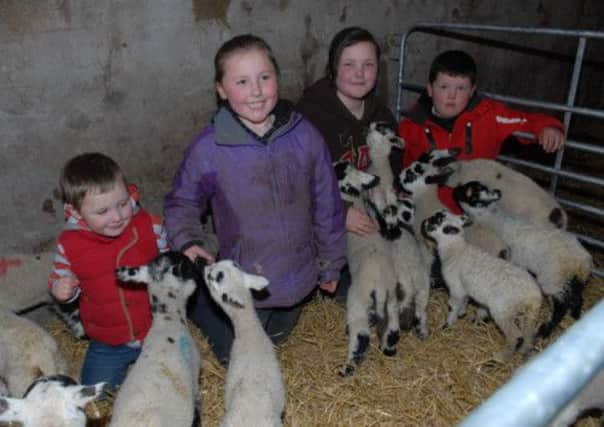Blizzard-hit farmers’ concerns for abandoned lambs


Three weeks after the storm, isolated areas of higher ground remain buried under several feet of snow and only when it finally melts will the full extent of the damage be known.
In the meantime, farmers are left to find and liaise with DARd for the disposal of sheep that succumbed to the freezing temperatures and lack of food. Many are bottle-feeding lambs that have been orphaned, or whose mothers lack the energy or milk to sustain them.
Advertisement
Hide AdAdvertisement
Hide AdAsked for a synopsis of the ongoing crisis, local Ulster Farmers’ Union spokesman William Cross said: “We simply don’t know the extent of it yet. A lot of stock has certainly been lost and the Ministry is arranging to pick up the dead animals, but we don’t know the actual number because there are still large areas still under snow. I know of one farmer in the Feystown area who can’t get on to the lane to get to sheep on the hill.”
There have been heartening instances of hardy Blackface ewes being dug out after two weeks and surviving, but they are rare. Even those ewes that found shelter are suffering, with potentially fatal consequences for their lambs.
“One of the biggest problems now is that ewes that have been rescued have gone for so long without feed that they have no milk for the lambs,” Mr Cross explained. “In some cases, when they’ve lambed they have no interest in the lamb and just get up and walk away because their energy level is so low.
“If the farmer can be with them at lambing and get some meal into the ewe they can come round fairly quickly and take to the lambs, but they have to be there as it happens.
Advertisement
Hide AdAdvertisement
Hide Ad“A lot of lambs are being bottle-fed and some of the lamb’s milk companies are providing free supplies through some of the local vets. It’s a nice touch and something that not all farmers may know about.”
Mr Cross fears some farm businesses will not survive the crisis. He said: “Basically, lambing time is the harvest for sheep farmers and some of them will have lost their income for an entire year. They’ve lost a crop of lambs, so their income is reduced considerably, but the overheads are still there. Most will survive, but some won’t.”
He added: “The other problem is that nobody knows yet how much Government assistance will be available, but we do know that under European rules the maximum will be £6,000 and that whatever it is, the cost of disposing of the dead animals in each case will have to be deducted.”
Most local postcodes are within DARD’s designated pick-up zone. Mr Cross said he is aware of a few farms in the BT39 area between Knockagh and Straid that do not qualify for the Stormont scheme, but added that the Department had been helpful in easing their plight.
Advertisement
Hide AdAdvertisement
Hide AdGlenarm farmer James O’Kane and his family have been busy salvaging what they can of their beleaguered flock. He has lost stock, but still does not know the final toll.
“There is still a lot of snow that blew into ditches and valleys and we don’t know yet what we’ll find,” said James, who is thankful for the support and hard work of family and friends in recent weeks.
“I was able to move some sheep on to a neighbour’s field where there was no snow, which was a great help,” he added.
With his daughters lending a helping hand with bottle-feeding more than 30 lambs, James reflected on the scale of the blizzards that buried swathes of East Antrim: “It was like a tsunami of snow. I’ve been farming for over 40 years and have brothers in farming longer than that and we’ve never seen anything like it,” he said.